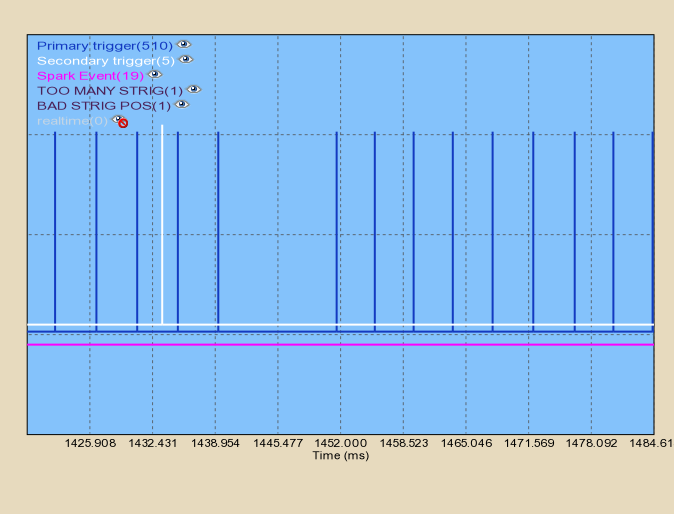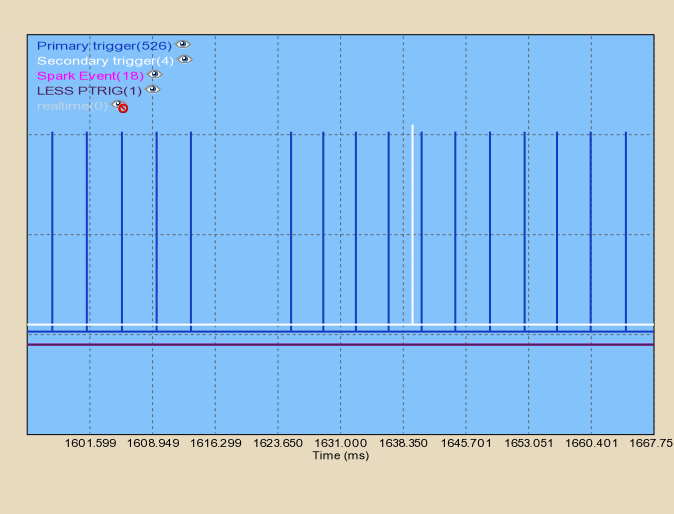Cam sync near missing teeth
I tried enabling cam sync on a early BMW M50 non-VANOS engine with bad results. I used a Honeywell GT1 Hall sensor since this engine has a VR sensor, only the VANOS engines have a Hall sensor but we had none of those and the GT1 is a drop-in replacement (needs a 4 mm shim to get 1 mm distance to tooth).
- the VR wheel is different from a HALL wheel.
- It is very possible that it can cause signal detection problem at a few thousand RPM. The adaptive threshold of the GT1 will adjust to the middle between the normal teeth high/low : but the magnetic amplitude at the missing teeth is different.
First off, to the believers in "keep it simple stupid" : If we ignore the fact that this engine can run perfectly fine with dual-out and "wasted spark", I feel this is an irritating issue that should have a solution or anwer.
Is this related to what's written in this forum thread :
- [vemssupport.com forum thread]
- see post by fphil on 2nd page
Here is a log file, triggerlogs (rising + falling) and the pictures below.
Right at about 3500 rpm the sync just goes crazy. I might have a hardware problem here with the sensor not detecting it properly, but the sectrig position doesn't make much sense. It's rock solid at 26.7 or 28.1 degrees at all other times up to that point. I have a hard time seeing that there is suddenly a lot of slop in the cam chain drive. So it could possibly be something with the sensor.
- I guess a scope shot of the problem would say a lot but I would like to know what the developers have to say and what others have seen might confirm what's going on.
- yes, a scope shot is essential in this case
- if you take triggerlog, set higher baudrate (115200)
Here are the triggerlog pictures from cranking the engine that show that the camsync tooth appears right at the missing teeth gap on this engine.
Falling edge (the better choice: more than 4*6 degrees from tooth0)

Rising edge
